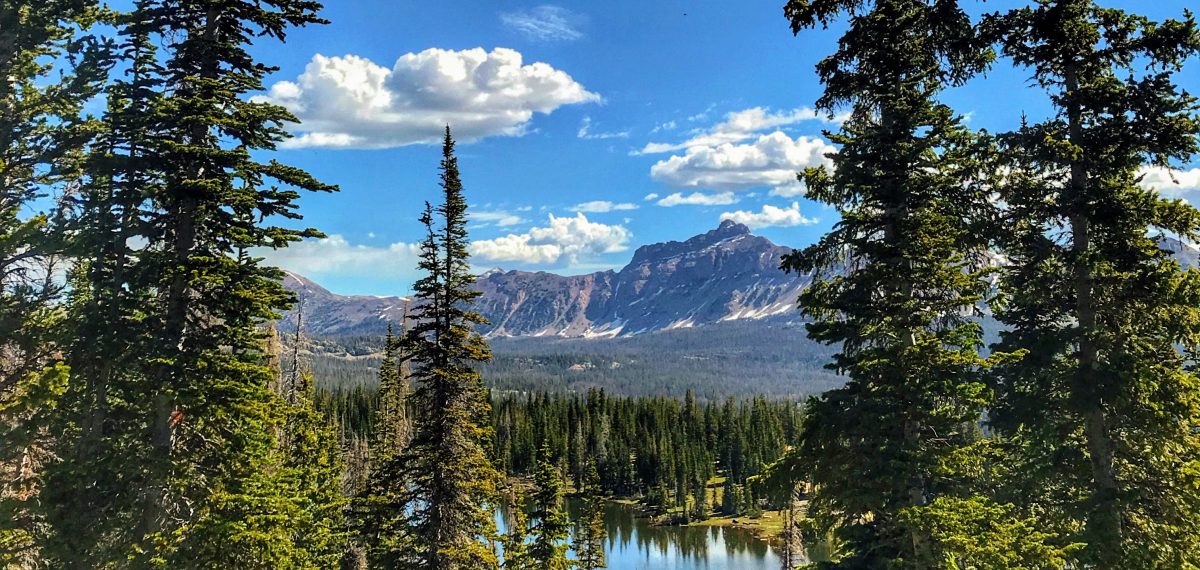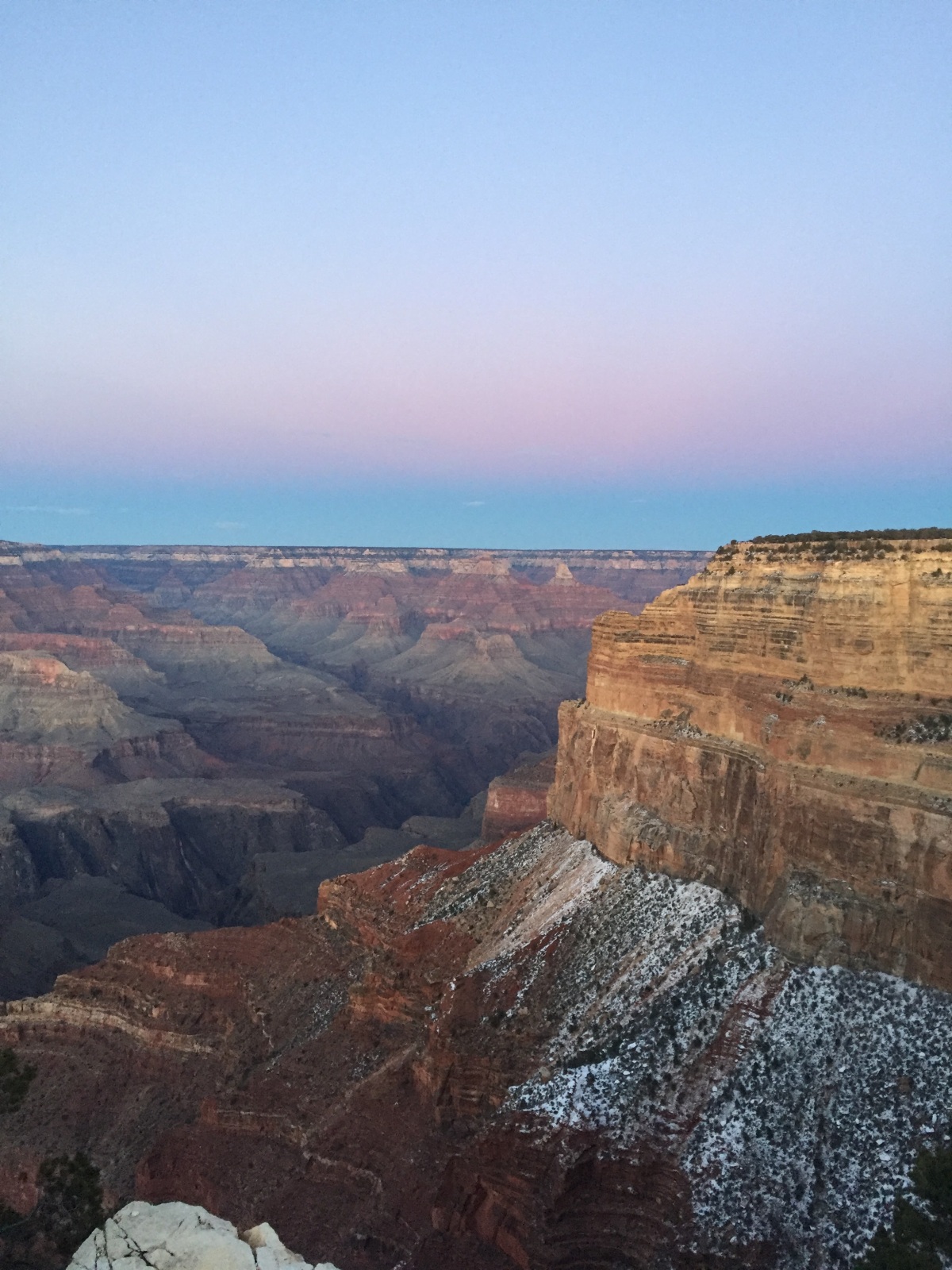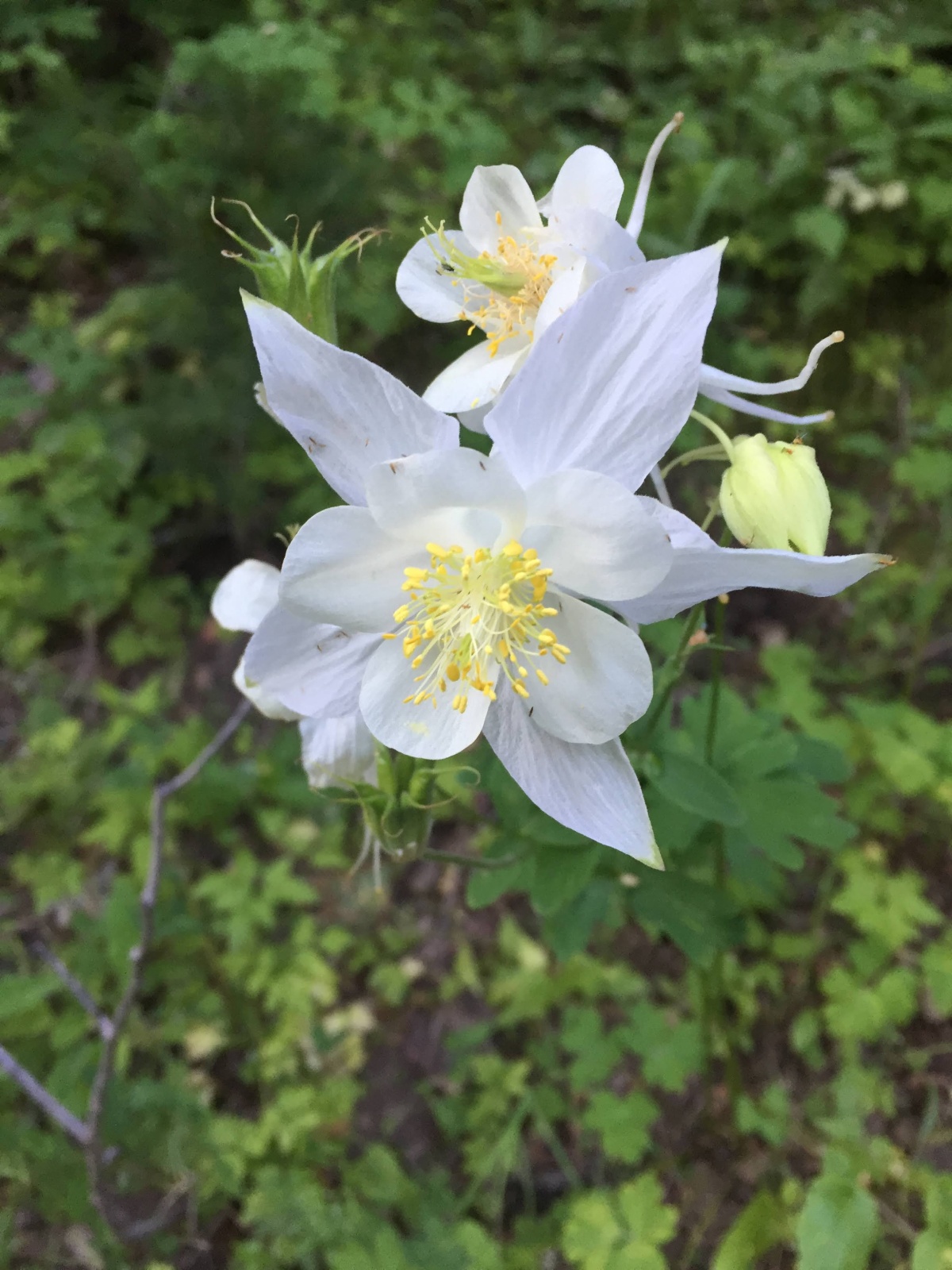I groggily awake almost an hour before dawn in late April, fill my small backpack with food and water, then drive to a mostly empty parking lot on the edge of Provo, nestled in the foothills above the city. I am finally beginning my journey to the top of Y Mountain. This was something I had always intended to do but never had. I attended a BYU women’s soccer game nearly seven years ago with a friend and sat above the field with a perfect view of Y Mountain. At one point I turned to her and asked, “Doesn’t it look like you could just hike straight up to the top?” In the fading twilight of that early fall evening, the mountain looked unbelievably friendly and inviting. My friend just laughed a little and looked at me incredulously.
That’s the funny thing about mountains, their very existence seems to call you towards them, their peaks and crags super-impose themselves first on your eyes, then on your mind, until there’s no forgetting them. But in all their inviting, they never creep even one inch toward you. They are constant in their stirring silhouette, although their apparel changes from various shades of brown to green to red and yellow to white and back again. Why did it take me almost seven years to hike the mountain that has towered above me all through my four years of school, and one year of work, here? It’s almost as if I neglected to visit a close family member. Almost every day I will turn to the mountains at some point and look at the little plays of light across them, track their snow cover in mid-winter, the frosted look of its conifer forests after a wet snow, the light green slowly running up towards the mountain peak as spring progresses, the soft red and yellow in fall. I’ve studied it so casually for so long, but never made the pilgrimage to its very top to pay my respects, never spoken with the oracle that must be somewhere near the pinnacle, never seen the grandeur that rests at the peak. In short, this hike was a long time coming.
The first section of the trail is steep as it switch-backs across the mountain side toward the giant “Y” of white painted rocks laid out across the mountain side. It’s a very wide trail, essentially a small road, removed of stones and too manicured. Fortunately, I’m beginning early enough in the morning to avoid the crowds of hikers and family’s making their way to the “Y.” The first precipitous ascent really takes my breath away, and is steep enough at points to force me to walk on my toes in order to make some forward progress. But it is a delicate balance, for within a few minutes I have to walk flat-footed again to give my aching calves a little rest. The sky is overcast but dynamic. The sky toward the west looks eerie and much darker than the clouds directly overhead. The slanting lines of far-off rain gives the hour a sort of gloom. I pass the loud and persistent calls of the Towhee, the new and exquisitely small and delicate leaves of the scrub oak, and a few other lost souls.
When I pass the “Y,” the path finally takes on a more trail-like quality. It is a welcome relief to have a path narrow and rocky once again. The path itself seems to offer adventures and vistas as fresh as the previous path’s staleness. The trail begins to climb in a southern direction toward the narrow gap of Slide Canyon. The path being smaller, the scrub oak and low shrubs surround me in a show of hospitality. As I pass through Slide Canyon the trail starts to descend slightly and the mountain opposite looms up. It appears an avalanche has taken down a whole stand of evergreen trees there a few years ago. It must have been at least a few years, as the trees are bare of branches and appear nothing more than randomly dispersed logs. From where I stand looking toward the opposite mountainside, an old juniper stands beside me. I wonder if the old and gnarled juniper felt sorrow the day of the avalanche. Inside it’s grizzled trunk worn and shaped by the years, was there a silent mourning for its fellow conifers? Did its phloem and xylem pause for a moment of silence? I stop near here too, not for some silent eulogy, but a quick drink of water. After the first ascent I have still not entirely caught my breath.
Now I begin to look out for pinyon pines. Pines are almost impossible for me to identify. It took me over a month to put a name to the two massive red pines outside my apartment window (and at this point I’m only half sure that’s what they are). During slow times at work I have been flipping through a tree field guide, which is part catharsis and part attempt to decipher any difference among pines. I am hopeful this brief study will pay off and I can spot some Pinyon pines among the rocky outcroppings and interspersed junipers that seem quite abundant at this point. Pinyons are notable in that they are one of a select variety of pine trees that provide us with pine nuts, prized in everything from pesto to pine nut coffee. However, as I make my way, scanning above and around me I don’t see anything, even through my binoculars, that even begins to resemble a Pinyon.
Now, White Firs and Douglas-firs loom up as I approach the lowest part of the canyon and continue up. There is something absolutely primeval about forests. My mind turns to a selected reading from a practice standardized test I took a few months ago. The reading developed new ways of understanding forest clearings in prehistoric human society. The prevailing view is that they played some commercial or agricultural role, but another, more iconoclastic idea, is that the forest was cleared out of some primal fear. The forests were truly dangerous places, and this apprehension would likely give way to superstitions and visions of terror. A similar idea was expressed in an excerpt I read for a college class, which described the increasing poverty and terror of West Africa as a white journalist ventures deeper into the dark forest. I didn’t particularly like that perspective then, as it seemed to superimpose personal fears onto larger forces, but as I find myself in the middle of a forest on a gloomy day, especially a pine forest that seems to manufacture darkness, I feel more sympathy to that perspective. I can’t help but to walk faster. I pass in and out of dense patches of firs, Douglas-firs, spruces, and more trees whose names I still don’t know.
There is a fascinating relationship between identifying a thing and being cognizant of it. They say the first step is recognizing there’s a problem. Without recognition there is no way forward. Perhaps the step before that, though obvious and perhaps unnecessary to repeat, is to have a working vocabulary. Without the power of classification would our lives be a blur of sinister forces and mysterious ebbings and flowings of emotion, mood, light, and darkness, with nothing to connect them? I don’t know. But at the very least, I find I don’t acknowledge a thing without some way to categorize it. A world full of unnamed mystery does have a certain allure, but I would trade it for one of mystery that outlasts all categorizations and taxonomic exertions. A true mystery, a real page turner that is, instead of a cheap Hardy Boy’s chapter book.
For the past decade I have intermittently studied and watched birds, and for a little less time (and less consistently), trees. But I didn’t go any farther than that. Last week I finished reading “Pilgrim at Tinker Creek,” and I am now enthralled by the idea of diversifying that learning to insects, amphibians, rocks, deep geologic time, and astronomy. The author, Annie Dillard, shows such pure wonder and, occasionally, even terror at the goings on of the living and dead around her, and writes about it all stunningly. It is such an ornate tapestry of creation we find ourselves in, and I don’t want to limit myself to knowing a bit about a few bits of it. I had a wonderful political science professor who recently and tragically passed away. He was a paragon of voracious curiosity. At his funeral his daughters eulogized him and mentioned that the day he died he had over 50 tabs open on his laptop. They ranged from how to grill the perfect steak, to the state of German political economy, to fly fishing, to how to varnish a table. This method of living has such a marvelous allure to it. Learning the names of things also gives you a way into a new world. It gives you something to hang your hat on, a foothold to climb above from, a beachhead from which to slowly advance in understanding. I memorize the names of things to keep my sense of wonder too. Not that the natural world needs help in being more brilliant. It doesn’t, and if it did, I would be the last person to be able to provide assistance. But the nature of its brilliance, its majesty, is stunning to such a degree as to overwhelm. Without small bite-size and digestible pieces of understanding and comprehension, I am just as likely to go to my apartment and stare at the carpet.
Eventually I reach a large clearing surrounded by aspens. I remember the clearing from a hike I took to Provo Peak last summer which passed by here. Then this clearing was a different version of itself. It was full of dense undergrowth and dazzling green of all hues and shades. The clearing now is mostly dead, but there are hints of life. There are small green sprouts in places, though piles of snow still litter much of the area. In some ways my morning journey resembles a walk back in time. I am traveling from fully-fledged spring to early spring to late winter. If I continue upward perhaps I could regain fall of 2013. Maybe then I would be able to keep my appointment with the mountaintop, or at least not be so late.
In a type of the spirit of prophecy that stalks me in the mountains, I feel as though I have seen the future. Was it real, though, or only a vision? To know for sure, I will have to wait until I return to the valley. I feel strangely comfortable with my new prophetic mantle. I see the piles of snow stacked high and the barren ground, blackened by the leaf detritus of the previous year all decomposed, and say to myself it will soon be different. The snow will be gone, the blackened earth made green once again, the clearing choked by new growth and all spangled in green and flowers. How audacious, how bold! But I feel the boldest, most enlivened, most comfortable assuming the seer’s burden in the mountains and light-dappled woods.
Ten or fifteen minutes after passing the clearing I reach the turn-off to the summit. I take it and continue plodding upward through an even denser forest than the last. The path takes me up a small depression in Y Mountain. On the left, to the west, lies the peak facing Utah Valley, to my right, and east, another hillock that subsides again before eventually rising again up toward Cascade Mountain. The forest is alive with intermittent noise. I haven’t seen one yet today, but I hear Red-Breasted Nuthatches with their nasally and high-pitched “yank yank.” At this point in my backwards-with-time journey I’ve reached late winter. I step over and through dispersed snow piles, now turning into a near constant cover of snow at points.
I crest the depression and rise into an open field with a mixed forest of aspens and conifers on either side. The gray sky has lightened slightly and a pale blue ceiling is visible at times. A Townsend Solitaire flaps overhead and alights on the tops of a nearby tree to sing the morning. The air is crisp and fresh, pungent with pine. A trip to the mountain is to overwhelm all the senses. To be baptized and washed in the confluence of morning air, sunlight, and rock. It seems my senses are inundated in the morning air so I can later taste it in the back of my mouth like the crunch of salt and sand in your teeth after a day at the beach.
By now I’m following footsteps in the snow, as the path is mostly obscured now. I see prints veer off towards the east, steps that ascend sharply up the ridge to what I presume and hope is the summit. It’s a scramble at points, and I’m fairly sure this isn’t the actual path. Eventually, after a brief struggle, I crest the ridge and walk down a little toward an overlook where I am immediately confronted by the valley. It is by turns startling and breathtaking. It’s almost blasphemous at times to see all our sins and follies laid out in one sweeping view. But it is beautiful too. The air is less crisp now, more forcefully cold, and I put on my sweatshirt and zip it up all the way. As I sit and eat a granola bar and a slice of last night’s pizza, I catch sight of a hawk in the distance soaring level with the mountaintop without a single flap of its wings.
I come to the tops of mountains always barely consciously awaiting some epiphany. To look over the landscape and be keeled over by some undeniable truth. To summit a mountain and be able to tell myself I know the mountain, for I have run my eyes across its top and looked down from its heights. To see what the mountaintop sees, and keep it for myself. But each time I reach a summit I realize this almost imperceptible desire is yet unsatisfied. I can’t even begin to claim I have known the mountain or discovered its knowledge. This knowledge isn’t to be had at the summit, nor in the forested coves, nor the clearings, nor the aspen stands, nor among the wildflowers. It seems there’s no single conclusive endowment of knowledge or transcendent beauty to be had at any single time. But perhaps something similar and deeper is to be had, a growing, living, and breathing ephiphany, found in the sum total and quiet accrual of quiet meditations in the woods, pine needles crunching underfoot, a hawk arcing across the sky, and the sun’s rays through a cloud.
There is an impulse to tick mountain summits off a list, to bag them, they say. But a mountain is much more than a single trail you hastily beat to the summit. It is more than its highest points. It is one of those unknowable things that draws you back, makes you seek the hidden treasures you may have missed the last time, to grasp the new things the mountain wants to give you. Just as the rocky ledges of Y Mountain verge on the infinite so are it’s moods and traits. But, if you insist on ticking mountains of a list, then I ticked off my list “Y Mountain on a cool, slightly overcast, early May, Saturday morning of 2020.” Only that, for the mountain is still on my list, exactly where I intend to keep it.










